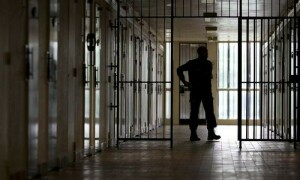Khyber Pakhtunkhwa (KP) police have discovered that the five Kohistan girls seen cheering on two male dancers in a 2011 video were killed, the KP additional advocate general told the Supreme Court on Wednesday.
The case came to light in 2011 when reports emerged that an online video of a young man dancing before a group of teenage girls had led to murder. Five girls in the audience, as well as the man who was dancing and his two brothers, were allegedly murdered on a jirga’s orders.
Although fact-finding missions have been unable to definitively establish whether the murders took place, circumstantial and empirical evidence strongly suggest that is the case.
Read more: Kohistan killings
Chief Justice of Pakistan Mian Saqib Nisar in today's hearing recalled that the court had formed three commissions to look into the matter and inquired about what their reports had revealed.
The prosecutor told the court that imposters had been produced in place of the girls seen in the video and that the commission was misinformed that no one had been murdered.
"[Rights activist] Farzana Bari was also part of one commission, what was her point of view?" the chief justice asked.
"Farzana Bari disagreed with the report, and now it has been proven that her suspicions were correct and the girls were murdered," the prosecutor said, adding that nine people have been named in the challan.
The Supreme Court ordered the prosecutor to prepare a challan and submit it within 10 days and wrapped up the case. The case is ongoing in a local court in Kohistan.
Justice Nisar, outlining the steps the victims' families could take, suggested that if they wished for the case to be heard by an anti-terrorism court, they could file an appeal in the high court.
"If the victims' families feel at any point that justice has not been served, they can file an appeal in the Supreme Court to hear the case again," the chief justice told a brother of one of the victims.
Background of the case
A mobile phone video shot in 2011 in the remote village of Sartai in Kohistan showed five girls ─ identified as Amina, daughter of Sarfaraz, Begum Jan d/o Mubeen, Siran Jan d/o Saeer, Bazeega, wife of Idrees, and Shaheen w/o Habibullah ─ clapping as two boys danced at a wedding. A third boy was filming the scene. The video allegedly spread among the villagers before it came to the attention of a local jirga.
The mixed gathering had taken place in a village located in an extremely conservative part of Khyber Pakhtunkhwa. In the eyes of the locals, the youngsters had violated tribal norms and brought dishonour upon them.
Muhammad Afzal Kohistani, the brother of one of the boys in the video, was the one who made the news public, alleging that the girls had been killed on May 30, 2012 on the orders of a cleric who led a 40-50 member tribal jirga. Officials in the area, however, had claimed that the murders did not take place and the girls were alive.
The Supreme Court that year took suo motu notice of the case in 2012 when the allegations surfaced, and women's rights activist Farzana Bari was sent to Kohistan as part of a fact-finding delegation to verify whether the girls were alive or dead.
Another rights activist, Fauzia Saeed, had said: "We met one girl. She was identified because we carried pictures of the girls. We met another who we could not identify but people in the area said she is among the women in the video."
The case was subsequently disposed off by the court in June 2012 after the commission recorded their statements.
Afzal Kohistani in January 2013 said he had moved an application in the Supreme Court requesting it to reopen the case. Days after the development, three of his brothers ─ including the two seen in the video ─ were shot dead on Jan 3.
A local court in 2014 was moved by the National Commission on the Status of Women against the alleged killing of the girls, and ordered police to produce the girls in court to verify that they were alive. Police, however, failed to produce the women in court, claiming that the women were alive but couldn't appear before court due to societal restrictions. Another production order was issued in April 2014.
Although a defence lawyer had earlier argued that, under local norms, it would be a matter of shame if the girls were produced in court, Justice Ejaz Afzal remarked that women have appeared as a witness in a majority of cases he had heard pertaining to Kohistan. The remoteness of the location has also made it difficult for activists to ascertain the truth.
The concerned families subsequently produced underage girls in the court to prove the claims that the girls seen in the video were alive. However, rights activist Farzana Bari disputed the claims in 2016 and said that the girls who were brought to court were not the ones seen in the video.
Bari had claimed that the girls who were earlier declared alive during the SC suo motu hearing were actually dead. Her witness statement followed a September 27, 2016 SC notice to the Khyber Pakhtunkhwa (KP) government and Kohistan DPO to again investigate the issue.
In her earlier statements, Bari had claimed, she had expressed serious doubts that the two girls produced before the commission were not the girls who had appeared in the said video, noting that her views were contrary to the other members' views on the issue.
She had also appended a dissenting note at that time demanding the involvement of Nadra officials in the case for positive identification of the girls to ensure that the girls produced before the commission were the same girls who appeared in the video.
The rights activist alleged that the local administration including the police had formed some kind of unholy alliance with the elected representatives of the Awami National Party to bury the issue, and demanded the girls be produced before the SC and an independent investigation team be formed to probe the issue and the alleged negligence of authorities.
A commission report submitted to the SC in Dec 2016 expressed fears that the girls may be dead: "The view taken and expressed... is the outcome of human observations, not free from error, maybe right or wrong, and can lead to an inference that either the girls are not alive or they have fled away and gone into missing being well aware of [the] consequences of traditional approach of their elders in such case."
The Kohistan police in August 2018 ─ seven years after the fact ─ registered an FIR of the alleged honour killings under Section 364 of the Pakistan Penal code and began probing the case again upon the Supreme Court's orders.
In Dec 2018, police claimed that four suspects arrested in November had not only confessed to the killings but also revealed that two of the five women believed to have been killed in the name of honour were alive.
"The bodies of three women killed after the marriage function video involving them went viral on the social media were thrown in Chaur Nullah by the suspects to hide their crime," the district police officer had said, adding that police were raiding possible hideouts of eight other suspects and expected the absconders' arrest in a few weeks. Police also seized a rifle used in the honour killing.
"We expect that two women, who are reportedly alive, will be produced before the police within few days," the DPO had said.














































